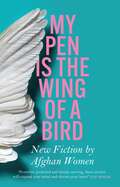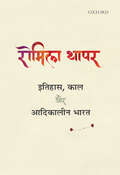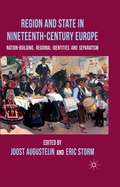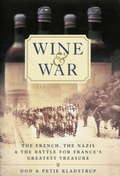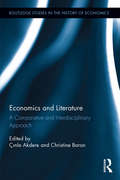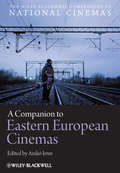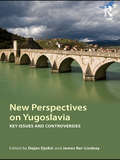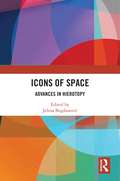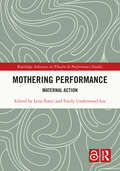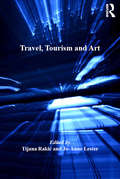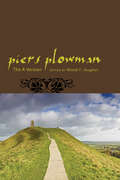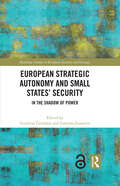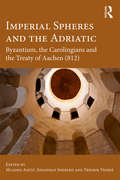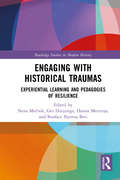- Table View
- List View
عنترة بن شداد الجزءالثاني
by مجهولوكان بسطام قويًّا قلبه، وأراد أن يطلق رأس الجواد، فما مكنه عنتر بن شداد، بل أدركه وزعق فيه وطعنه بعقب الرمح فألقاه على وجه الأرض، وقال لأخيه شيبوب: شد كتافه حتى ننظر ما يجري بيننا وبين القادمين، فنظر نجاد إلى هذا الحال، فقال لمن معه: يا ويلكم، خذا هذا الأسود ابن ملكنا بسطام وشداه في الاعتقال، وإني أقول إنه ما قدر عليه إلا من خوفه من هذه الفرقة العبسية التي لحقت بصاحبها، حتى تعينه على هذه القضية، كما لحقنا نحن صاحبنا فدونكم وإياهم، فارفعوهم على أسنة الرماح وأنا أمزق جسد هذا الأسود، وأطلق لمولانا السراح لأني أقول: إن هذا الفارس هو عنتر، الذي قد سار بسطام ليأتي برأسه، ثم إنه حمل يطلب عنتر في خمسين فارسا، وحملت بقية الثلاثمائة فارس على عمارة ورفقته مثل السود القناعس، وقد قلوا في أعينهم وداروا بهم وتفرقوا كراديس ومواكب، فعند ذلك لزم بنو عبس القتال خوفًا من المهالك، فانظر أيها السامع إلى هذه الأشياء التي تحير العقول، فإن عمارة قد أتى يقاتل عنتر فصار معينا له بغير علمه واختياره، واحتاج أن يقاتل معه، ويخلص نفسه فزعا من العطب، ولو أمكنه الهروب من ذلك لهرب، ولكن ما قدر على ذلك لأن الأعداء قد أحدقت بهم من سائر الجهات والممالك، فقاتل وبذل المجهود وتزاعقت عليهم الفرسان مثل الأسود، وتواثبت الشجعان مثل الفهود، واقشعرت الجلود، وقدحت حوافر الخيل النار في الجلمود، وخيم الغبار على رأسهم حتى بقي مثل الرواقي الممدود، وفاضت الدموع على الخدود، وقدت الصوارم الهامات والقدود، وخفقت الرايات والبنود، وتلهجت في الأحشاء نار الحقود، وعادت وجوه الأبطال سود، من كثرة الغبار الممدود، ومما جرى عليها من نقض المواثيق والعهود، وشربت الأودية من أدمية الفرسان والكبود، وخسرت بنو زياد في ذلك اليوم المشهود، ورأت مقام عنتر في ذلك الوقت محمود، وأيقن عمارة أنه هالك من بين أهله ومفقود، وكاد أن يموت من الحسد، وعاد متنغصا مكمود، ثم إنه افتقد أصحابه فوجدهم قد فقد منهم خمسون فارسا، والباقون أشرفوا على الهلاك، فعندها قال عمارة: النجاة، ثم إنه لوى عنان جواده وولى هاربا، فتبعه عروة ومن بقي من رجاله، وهم لا يصدقون بالنجاة.
سيرة الظاهر بيبرس المجلد الثاني
by مجهول(قال الراوي) فقال الملك سامحك الله بما فعلت من ذلك ولكن لا بد من التحقيق بينكما وما يكون الرأي في ذلك الركبة فقال يا مولاي اعلم أن الأعجام واثقين مني ولكن أنت رجعت إلى العرض وأنا رجعت إليهم وأقبل الليل بالاعتكار أرسل إلى أخواتي الفداوية وأنا أكون معاونًا لهم على كبس الركبة ونهب الأعادي فقال الملك هذا هو الصواب والأمر الذي لا يعاب ثم رجع إلى مكانه بعد أن تودع السلطان منه وعاد بيبرس وقد اجتمع برشيد الدولة وأعاد عليه سرًا بينه وبينه ففرح رشيد بذلك الخبر وتهلل وجهه واستبشر ثم أخذه ودخل على القان هلاون وقال له اعلم أن بيبرس العجمي قد تحارب مع قان عرب وكان مراده أسره فلم أمكنه ذلك ولكن لا بد أن يأسره غدًا إن شاءت النار فقال اللمين قوم بلاه ثم إنهم صبروا إلى الليل وقد نامت الأعاجم وهم آمنين من حوادث الزمان وما خبئ لهم عند مدبر الأكوان حتى توسط الليل فبينما هم في ألذ ما يكون من المنام وإذا بالصياح قد أخذهم من سائر الأقطار ووقع فيهم القتل السيف البتار فلا أحد قدر أن يثور من مكانه حتى طارت رأسه عن أبدانه وربما كان الرجل منهم إذا أخذ سلاحه قتل به أخاه وأعدمه الحياة ومنهم من كان متجرد بغير حسام وصارت المجوس شنيارها معكوس وجيشها مكبوس وعمل فيهم السيف والدبوس ولمعت السيوف في غياهب الملموس وزهقت النفوس وجرى الدما من الرجال مثل ذبح النيوس وعاد صباحهم معكوس وعمل فيهم البتار وقد اشتعلت نار الحرب إشعال وتحندل الأفيال وجرى الدما وسال فلا كنت تسمع للسيوف إلا الرنين ولا للمجاريح إلا الأنين وأخذهم السيف من الشمال واليمين وضاق عليهم البر الفسيح وتعاووا مثل عي الذبيح وضاق الخناق وشربوا من الموت أمر مذاق ووقف الحرب على قدم وساق وتعلقت الفرسان الفرسان والشجعان وطارت الرؤوس من الأبدان وزهقت النفوس من شدة الولهان وشيب الشجاع المصان وولى الجبان المهان وصار الدم ينزل والسيف يعمل ونار الحرب يشعل وكانت هذه الواقعة لا يعرف لها أول من آخر (يا سادة) وكان السبب في ذلك سبب عجيب وهو أنه لما رجع الملك من الميدان أخبر الوزير بما دار بينه وبين بيبرس من الكلام.
عنترة بن شداد الجزء الأول
by مجهولوكان بسطام قويًّا قلبه، وأراد أن يطلق رأس الجواد، فما مكنه عنتر بن شداد، بل أدركه وزعق فيه وطعنه بعقب الرمح فألقاه على وجه الأرض، وقال لأخيه شيبوب: شد كتافه حتى ننظر ما يجري بيننا وبين القادمين، فنظر نجاد إلى هذا الحال، فقال لمن معه: يا ويلكم، خذا هذا الأسود ابن ملكنا بسطام وشداه في الاعتقال، وإني أقول إنه ما قدر عليه إلا من خوفه من هذه الفرقة العبسية التي لحقت بصاحبها، حتى تعينه على هذه القضية، كما لحقنا نحن صاحبنا فدونكم وإياهم، فارفعوهم على أسنة الرماح وأنا أمزق جسد هذا الأسود، وأطلق لمولانا السراح لأني أقول: إن هذا الفارس هو عنتر، الذي قد سار بسطام ليأتي برأسه، ثم إنه حمل يطلب عنتر في خمسين فارسا، وحملت بقية الثلاثمائة فارس على عمارة ورفقته مثل السود القناعس، وقد قلوا في أعينهم وداروا بهم وتفرقوا كراديس ومواكب، فعند ذلك لزم بنو عبس القتال خوفًا من المهالك، فانظر أيها السامع إلى هذه الأشياء التي تحير العقول، فإن عمارة قد أتى يقاتل عنتر فصار معينا له بغير علمه واختياره، واحتاج أن يقاتل معه، ويخلص نفسه فزعا من العطب، ولو أمكنه الهروب من ذلك لهرب، ولكن ما قدر على ذلك لأن الأعداء قد أحدقت بهم من سائر الجهات والممالك، فقاتل وبذل المجهود وتزاعقت عليهم الفرسان مثل الأسود، وتواثبت الشجعان مثل الفهود، واقشعرت الجلود، وقدحت حوافر الخيل النار في الجلمود، وخيم الغبار على رأسهم حتى بقي مثل الرواقي الممدود، وفاضت الدموع على الخدود، وقدت الصوارم الهامات والقدود، وخفقت الرايات والبنود، وتلهجت في الأحشاء نار الحقود، وعادت وجوه الأبطال سود، من كثرة الغبار الممدود، ومما جرى عليها من نقض المواثيق والعهود، وشربت الأودية من أدمية الفرسان والكبود، وخسرت بنو زياد في ذلك اليوم المشهود، ورأت مقام عنتر في ذلك الوقت محمود، وأيقن عمارة أنه هالك من بين أهله ومفقود، وكاد أن يموت من الحسد، وعاد متنغصا مكمود، ثم إنه افتقد أصحابه فوجدهم قد فقد منهم خمسون فارسا، والباقون أشرفوا على الهلاك، فعندها قال عمارة: النجاة، ثم إنه لوى عنان جواده وولى هاربا، فتبعه عروة ومن بقي من رجاله، وهم لا يصدقون بالنجاة.
My Pen is the Wing of a Bird: New Fiction by Afghan Women
by"Powerful, profound and deeply moving, new fiction by Afghan women writers will expand your mind and elevate your heart" ELIF SHAFAK"Written in simple, direct prose and offers vivid snapshots of a country beset by war and violence . . . It seems more important than ever to read the work of these courageous writers" Financial Times"My pen is the wing of a bird; it will tell you those thoughts we are not allowed to think, those dreams we are not allowed to dream"A woman's fortitude saves her village from disaster. A teenager explores their identity in a moment of quiet. A petition writer reflects on his life as a dog lies nursing her puppies. A tormented girl tries to find love through a horrific act. A headmaster makes his way to work, treading the fine line between life and death."A precious collection of work, the first and maybe the last of its kind. My Pen Is the Wing of a Bird is a huge accomplishment" MONIQUE ROFFEY, author of The Mermaid of Black ConchMy Pen Is the Wing of a Bird is a landmark collection: the first anthology of short fiction by Afghan women. Eighteen writers tell stories that are both unique and universal - stories of family, work, childhood, friendship, war, gender identity and cultural traditions."This book reminds us that everyone has a story. Stories matter; so too the storytellers. Afghan women writers, informed and inspired by their own personal experiences, are best placed to bring us these powerful insights into the lives of Afghans and, most of all, the lives of women. Women's lives, in their own words - they matter." Lyse Doucet in her IntroductionThis collection introduces extraordinary voices from the country's two main linguistic groups (Pashto and Dari) with original, vital and unexpected stories to tell, developed over two years through UNTOLD's Write Afghanistan project. My Pen Is the Wing of a Bird comes at a pivotal moment in Afghanistan's history, when these voices must be heard.With an Introduction by BBC Chief International Correspondent Lyse Doucet and an Afterword by Lucy HannahABOUT UNTOLD UNTOLD is a writer development programme for marginalised writers in areas of conflict and post-conflict. Afghanistan has millions of Pashto and Dari speakers with little or no local support for creative writing, literary translation, or literary editing. Support for writers has been hampered by cultural norms, free expression issues, chronic instability, and internal displacement. UNTOLD has been working one-to-one with women on their short stories, with English-speaking literary editors and translators working with the writers to realise the potential of their stories for publication both locally and globally in translation.
السيف والنار فى السودان
by سلاطين باشاعدنا في التمهيد الذي وضعناه لكتاب "التاريخ السري لاحتلال انجلترا مصر" لمستر ويلفرد سكاون بلنت أن نصدر من بعده كتاب "السيف والنار في السودان" لسلاطين باشا, وهذان الكتابان يعدان من المستندات التاريخية التي لابد من الإطلاع عليها لمعرفة الحوادث التي تقلبت على مصر والسودان من خمسين سنة وهي الحوادث التي ما زلنا نعاني نتائجها إلى الآن. فاليوم ها نحن نبرز كتاب "السيف والنار في السودان" وفاء بذلك الوعد ورغبة في أن تكون له الفائدة المرجوة في خدمة تاريخ مصر الحديث. وسلاطين باشا، مؤلف هذا الكتاب، هو ضابط نمساوي ولد سنة 1857م في فيينا وجاء إلى مصر سنة 1878م ودخل في خدمتها فعينه غوردون باشا حاكمًا لدارفور سنة 1884 ولكن لم يمض عليه في منصبه هذا قليل حتى اعتقلته جيوش المهدي فبقى أسيرًا يَدعي الإسلام والإيمان بالمهدوية إلى سنة 1895م وحينئذ فر إلى الجيش المصري واشترك معه في استرداد دنقلة وأم درمان. وبقى سلاطين باشا بعد ذلك موظفًا في حكومة السودان بين سنة 1900 وسنة 1914 ثم أعلنت الحرب العالمية فترك الخدمة في السودان وعاد إلى النمسا ودخل في خدمة الصليب الأحمر. ولما عقدت الهدنة سنة 1918 انتدب عضوًا في بعثة الصلح في باريس. وقد نقل هذا الكتاب إلى اللغة الإنجليزية السير ونجت باشا الذي كان حاكمًا للسودان ثم معتمدًا لانجلترا في مصر. وهذه الترجمة الإنجليزية هي التي اعتمدنا عليها في التعريب.
الموسيقي الشرقية والغناء العربي
by قسطندي رزقلقد أُشربت محبة المرحوم عبده الحمولي منذ نعومة أظفاري يوم خالط المرحوم والدي بالزقازيق وزارنا في دارنا وغنانا غناءه العربي؛ فأعجبت به أيما إعجاب وارتسمت في ذهني صورة العروبة الفخمة بما مثَّل أمامنا من الحركات والأقوال التي صوَّرت لي إباء العرب وفروسيتهم وعظمتهم، وما أتاه من شجيّ التلحين وحسن الأداء، وتفخيم اللفظ الدال على معناه، والإبانة في مخارج الحروف، فهو حرىُّ بأن يكنى بغريد الشرق الذي لا تفتح العين على مثله، وأخذت منذ ذلك الحين أشعر بتيار موسيقى يتمشى في عروقي إلى أن أضحيت من المولعين بالغناء العربي الذي لا أصبو إلا إليه، وحزت ملكة التمييز بين جيده ورديئه لا سيما إذا سمعت ركزا لخليط مجدد. ولما هبَّ على الموسيقى العربية عاصف التجديد، وحاول أن يقتلع جذورها من تربتها المباركة الخصبة، شمرت لصد ذلك التيار عنها غيرة على عظمتها وسحرها، واتقاء للرمق الباقي منها، إذ هي الآن والعياذ بالله واقفة على مفترق طريقين لا محيد لها عن سلوك واحد منهما، فإما أن تحيا وتستعيد ماضي شبابها إذا تداركها أولو الأمر منا، وإما أن يسجل عليها الموت الذي لا حياة بعده إذا ألقينا حبل المجددين على غاربهم يجهزون على تلحيننا القومي ويرتضخون لَكْنَةً غربية بدلا من ترديد نبرنا العربي،
عمدة الطبيب في معرفة النبات
by يحيى مراددراسة التراث وتاريخ العلوم عند العرب والمسلمين، أمر لابدّ منه في مرحلة التحوّل التي تمر بها الأمة العربية. ذلك لأن اطلاع أبنائها على المنجزات العلمية التي حققها الأجداد في الماضي، لابدّ أن يكون باعثاً على الثقة في النفوس، وحافزاً لحث الخطى في طريق التقدم العلمي والتقني الذي نسعى لتحقيقه. ومن واجب التراث علينا أن نتصدى بأنفسنا لكشف مكنوناته، ونشر روائعه، وإلقاء الضوء على مدى مساهمته في إغناء المعرفة والعلم خلال قرون عديدة، بعد أن ظل هذا العمل مقتصراً على المستشرقين الذين ينتمون إلى أمم مختلفة. وفي مكتباتنا العربية العامة والخاصة كثير من المخطوطات القيّمة، والكتب النافعة التي لم تدرس حتى الآن، ولاسيّما في موضوع الطب والصيدلة وعلم النبات والتي كان لها سماتها، فأدت دوراً كبيراً في إثراء العلوم وبث روح الحياة. حيث كان يلتقي النبات والدواء في مسيرة واحدة لتأمين الغذاء النافع والدواء الناجع. لقد توافرت للعرب ثروة معرفيّة ولغويّة هائلة حين انصرفوا إلى الطبيعة، كغيرهم من الأمم التي سبقتهم، فوجدوا أن الأرض تزخر بالخيرات، من شجر وعشب وبقل وتابل وغذاء، فانصرفوا إلى "علم الفلاحة" ودراسة النباتات. وألّفوا في ذلك كتباً كثيرة لها أهميتها في ميادين علوم النبات والصيدلة والطب وغيرها. وكانت عنايتهم بأصناف النبات نابعة من حاجتهم إلى الغذاء والدواء معاً. وإلى التطيب بالعطور، وصناعة الصباغة والدباغة، وتركيب المواد الصيدلانية من جذور وقشور وثمار وبذور وأعشاب نباتات مختلفة. وهكذا أصبحت المعاجم العربية، والمؤلفات العلمية، غنية بكم وافر من الأسماء والمصطلحات النباتية، وضمَّت معارف العرب المسلمين القدماء في علمي الطب والنبات. فكانت مصدراً لمن ألف وكتب في المفردات النباتية والغذائية والدوائية. وهي كثيرة العدد نذكر منها: "كتاب النبات" لأبي حنيفة الدينوري(1) ت 282هـ-895م)، وكان من أكثر المعاجم جمعاً للمادة، وأعظمها أثراً في معاجم النبات التي ألفت فيما بعد.
أول الخلفاء الراشدين أبو بكر الصديق
by محمد رضاقد كنت شديد الرغبة في تأليف سيرة رسول اللّه صلى اللّه عليه وسلم لنشرها على العالم الإسلامي فقضيت الأيام والليالي الطوال في الإطلاع والبحث في كتب السير فجمعت شتاتها وشرحت الغامض منها وحققت الروايات وأثبت تواريخ الوقائع ورددت على الاعتراضات والترهات ردوداً مدعَّمة بالبراهين الساطعة والحجج القاطعة، فجاء الكتاب وافياً بغرضي من حيث إيصال المعلومات الصحيحة إلى العالم الإسلامي. ولما فرغ طبعه، تلقاه الناس بالقبول والاستسحان وأقبلوا على مطالعته بشوق وشغف، ونال بحمد اللّه وفضله رضا العامة والخاصة وتواردت عليّ رسائل التفريط والتشجيع من الكبراء والعلماء والأدباء حتى عجزت عن شكرهم على ثقتهم بشخصي العاجز الضعيف، وشعرت بقوة تدفعني إلى مواصلة البحث والتأليف بالرغم من كثرة المشاغل الدنيوية. وقد سألني كثير من الأصدقاء الأعزاء أن أتبع سيرة رسول اللّه بسير الخلفاء بنفس الطريقة التي انتهجتها فسرتني فكرتهم ولم يسعني إلا إجابة طلبهم واستخرت اللّه تعالى أن أكتب سيرة أبي بكر الصديق رضي اللّه عنه فإنه أول الخلفاء الذين أمرنا رسول اللّه بالاقتداء بهم والاهتداء بهديهم. لما توفي النبي صلى اللّه عليه وسلم ارتجت العرب واختلف المسلمون ولا سيما الأنصار والمهاجرون في الخلافة فتدارك الأمر أبو بكر بحكمته وسرعة بديهته وتمت له البيعة بالإجماع. وقد برهن رضي اللّه عنه أنه أكفأ رجل وأنه رجل الساعة وقتئذ لأن العرب عندما سمعوا بوفاة رسول اللّه ارتد كثير منهم واستفحل أمر المرتدين في جزيرة العرب، وظهر المتنبئون وجمعوا جيوشهم وثاروا على المسلمين.
سيرة الأميرة ذات الهمة وولدها عبدالوهاب - جزء1
by ليس موجودقال الراوي: ومن جملة من خرج إليه عمرو بن عبد الله وهو يقول ادع لنا يا أخينا في الله، وأما أبا محمد البطال لما رأى الناس يهرعون سأل عن ذلك، فقال له بعض الإخوان فاز بالسعادة من فاز هذا القاضي قد قدم من أرض الحجاز فسار أبي محمد البطال من جملة الناس إلى أن وصل إليه، فرآهم يقبلون قدميه والشاطر من يصل إليه، وهو يبكي فما زال البطال يضحك إلى أن قرب منه، ووقعت عينه عليه فقال عقبة يا ولد يا بطال العاقبة إليك نزور البيت العتيق، وتزول عنك الذنوب، ويصل إليك التوفيق وتعاين ذاك المكان تحقيق، فقال البطال والله يا قاضي ما أنا إلا زرت البيت الذي كنت فيه، لكن ما غطست في جرن البركة الذي أنت غطست فيه، فقال عقبة وقد عدم رشاده وخفق من ذلك فؤاده، ويلك يا بطال إيش هذا الكلام وهذا الفضول الذي تقوله، وإذا بالأمير عمرو بن عبد الله قد وصل، فقال يا ولدي يا عمرو والله يوصل إليك ما دعوت لك في صحيفتك من الدعاء في البيت الحرام وزمزم والمقام، ثم ركب على ظهر بغلته بعد السلام والناس من وراه منقلبة، وكان البطال لما وقع بالقنديل قدمه للأمير عبد الوهاب، ففرح به فرحًا شديدًا ما عليه من مزيد، وكان البطال كره المقام بين بني سليم، وقال وحق المصطفى لا أقمت في مكان فيه عقبة بعد أن رأيت بعيني ما فعله، ولا بد أن أكون لهلاكه سبب، وأنحره كما أنحر الغنم، ثم طلع إلى قلعة الكوكب وأطلع الأميرة على القنديل، وقال هذا الذي تأسفتي عليه، وطلبتيه من الملك العلام، بأن يكون معلق في البيت الحرام، ثم حدثهم بحديث عقبة وما جرى له فقالت الأميرة لا حول ولا قوة إلا بالله العلي العظيم، وصعب على الأمير عبد الوهاب وقال للبطال على ماذا عولت أن تفعل، فقال انتقل من عندكم وأجعل معولي على الله، ثم عليكم وأنحر هذا اللعين فإني سمعته يوعد كلب الروم بهلاكك ويجعل بلاد الإسلام للروم والكفرة اللئام، ويملك البيت الحرام فقال عبد الوهاب ساءت ظنونه وأعماله وقطعت أوصاله ولا بد لي إن شاء الله أن أصلبه على باب الذهب الذي تنصر فيه، ولو احتمى بكل من كفر، وما قدر هذا الكلب إلا كلب حتى يذكر بيت الله الحرام، وزمزم والمقام، وأنت أخي من الدنيا والآخرة، لك ما لي وعليك ما عليَّ، ثم إنه أمر غلمانه أنهم ينقلون أسباب البطال من ملطية إلى قلعة الكوكب، وكانت ثلاثة جوار روميات وعشرة غلمان والكل علمهم الاحتيال والخداع، وجرأهم على الأهوال وأقام البطال في قلعة الكوكب وأعلم الأمراء بإسلام مارس ودارس، وأختهم أرمانوسة، ففرحوا بذلك فرحًا شديدًا ما عليه من مزيد، وقالت الأميرة سبحان الله من أيقظ هؤلاء من سنة الغفلة وأضل عقبة من علمه وفضله، ولكن الله يفعل ما يشاء ويحكم ما يريد، ولم يزل البطال في قلعة الكوكب إلى أن سمع بوصول عقبة، فقال لا بد لي من الخروج إليه، ثم إنه خرج كما ذكرنا وكلم عقبة بما وصفناه، وعاد البطال إلى قلعة الكوكب وأعلم الأمير بقدوم عقبة، وكيف وصل من الحجاز، فقالت الأميرة إن قتله عند الله أعظم أجر من فتح القسطنطينية، لأنه يلعب بالأديان ويكفر بالرحمن، ثم أقاموا إلى أن أصبح بالصباح، وإذا برسول الأمير عمرو وصل إليهم يطلب الأمير أبو محمد البطال، وأيضًا يطلب القنديل ويأخذ من البطال حق القصاص بما يتكلم في حق عقبة ويقابله بما يستحقه، وأما القنديل يوصله إلى الأمام فإنه ولي الأحكام. قال الراوي: وكان السبب في ذلك الملعون عقبة لأنه لما وصل إلى ملطية وعلم أن البطال شنع عليه بهذه الأقوال الرديئة، وأيضًا بالغ في تشديد هذه القضية، وأنه اطلع على تنصره فقال أنا اعلم أن هذا الصبي يكشف سري بما رأى مني، فلم ينم تلك الليلة حتى ملأ قلب عمرو بن عبد الله، وقال له يا ولدي أنت هاهنا ملك العربان وأمير الثغور في كل مكان، وما نريد يتم أمر إلا ونعلم به الخليفة أمير المؤمنين، وإلا إن دمت هكذا انتقصت منزلتك عند الأمراء وعند الخاص والعام، وأيضًا تستطيل بني عامر وبني كلاب على بني سليم، وما ينبغي أن تكون بني سليم تحت الذل والضيع، وينبغي أنك ترسل تطلب القنديل لأن البطال دخل إلى القسطنطينية وسرق مالاً جزيلاً، ومن جملته ذلك القنديل وهو من الصواب إنك تطلبه وتطلب أيضًا البطال حتى أنه يقوم إليَّ ذليل، وأقبح بما قال في حقي لأنه رماني بالزور والبهتان، وتكلم في حقي بالكفر والطغيان، وسوف يكون لهلاكه سبب، وإذا لم نقيم ناموس الإمارة وإلا حلت بنا كل الخسارة.
Itihas, Kaal aur Adikalin Bharat
by रोमिला थापरIn this book, Romila Thapar examines the link between time and history through the use of cyclic and linear concepts of time. While the former occurs in a cosmological context, the latter is found in familiar historical forms. The author argues for the existence of historical consciousness in early India, on the evidence of early texts. This is the Hindi edition translated from English.
الغـرر في فضـائل عـمـر
by جلال الدين السيوطيهذه أول دراسة تولي شخصية تراثية عناية كاملة؛ إذ أن كل الأعمال النقدية والفكرية قبل ذلك، لم تهتم بالشخصيات التي يمكن أن يكون استلهامها في إطار الفكر ظاهرة بذاتها، جديرة بالتأمل والنظر. وقد كان الهدف الرئيسي هو ملء الفراغ الذي تركته مثل هذه الدراسات في ذلك الميدان، كما كان الهدف الأسمى أن هذا النوع من الدراسات ينطلق من حتمية أن التراث هو الينبوع الحي المتدفق، الذي يلجأ إليه الكاتب العربي؛ ليجد فيه الراحة وتجديد العزم، ومن ثم الإسهام في رسم الخطوط العامة للفكر في عصره، سواء ما يخلو منه أو ما يجب أن يكون عليه، وهذا، فيما نرى يعد من أهم أهداف الأدب في أي زمان ومكان. وإذا كانت هذه الدراسة قد تلمست في تفسير الظاهرة التراثية منهجًا قريب الشبه بمنهج حديث يعرف اليوم؛ بإسقاط الفكر على الحادثة التاريخية لإعادة تحليلها فكريًا، فقد أضفنا إلى الممارسة التاريخية والفكرية كل النصوص (الأدبية) التي كتبت عن شهرزاد في العصر الحديث، بقصد إعادة فتح ملف" توظيف" التراث في بعض نواحيه، وإعادة قراءته من جديد. وعلى هذا النحو فإن وضع النص الأدبي، بجزئياته وملابساته العامة والذاتية؛ تحت مجهر البحث العلمي، وتلمس وجهات نظر الأدب والنقد والتاريخ؛ هو هدف البحث لإعادة كشف الكثير في خارطة الفكر العربي. *** يدور إطار البحث حول (توظيف شخصية شهرزاد في الفكر العربي الحديث) وهو آخر أشكال الكاتب بموروثه الفلكلوري، ويمكننا في تتبع فصول الكتاب تحديد درجة هذه العلاقة من حيث درجة النجاح أو الإخفاق. وينقسم الكتاب إلى مدخل وستة فصول.. يعالج الفصل الأول فيه نقطتين هامتين؛ يعدان الركيزة الأساسية التي تسترشد بهما الدراسة فيما بعد، أحداهما، تتبع المنحنى التاريخي الذي سارت فيه شهرزاد منذ خرجت من إطار (الليالي) إلى الغرب حتى عادت منه إلى الشرق ثانية، وقد تغيرت كثيرًا أثناء الرحلة التي بلغت قرابة سبعة قرون، فتحول فيها الكثير من سماتها الشرقية وعروبتها؛ ليلتقي بها مفكرونا في بدايات هذا القرن؛ إذ كانت خطوط الفكر العربي، حينئذ وتلك هي النقطة الأخرى، تتشكل، حين كان كتابنا ومثقفونا يدخلون دائرة المحاق؛ حيث الحيرة والارتداد والمحاكاة. أما الفصل الثاني فينطلق من الفكر الجمالي؛ لنتعرف على شهرزاد من خلال المذاهب الغربية المختلفة، كالرومانسية والرمزية خلال القرن الثامن عشر، ليتوقف عند استلهامها في الفكر العربي في الحقبة الأخيرة؛ حيث كانت مرحلة التأثر بتلك المذاهب (لا التمذهب) من جانبنا تغلب على كل تطوراتنا الفكرية والأدبية، فكان أهم ما توصلت إليه تلك الدراسة، وأكده استلهام النموذج أن معالجة أعمال كتابنا الكبار لا يجب أن تتم من خلال مذهب أوروبي؛ إذ إن كل من حاول ذلك من كتابنا أكدوا على أنهم لم يكونوا مذهبيين بالمعنى العلمي لهذه الكلمة. وتتجمع كل خطوط (الفكر الاجتماعي) لتصب في نفس المجرى في الفصل الثالث، حين تؤكد الدراسة، على أن جهد كتابنا على امتداده وتوسعه في معاني الحرية والديمقراطية والعدالة، إنما جاء بدلالاته الاجتماعية والفكرية، مقترنًا بالنزعة الوجدانية التي يلمسها فكرنا العربي منذ فترة مبكرة من تطوره، وقد انعكس هذا كله في جنوح مثقفينا إلى المثالية والميثولوجيا (الأسطورة) أكثر من انحيازهم إلى الخط الاجتماعي، وما ترتب عليه من فقدان كثير من الرؤى الجادة، التي كان من الممكن الوصول إليها، كالفكرة العربية التي كان وضوحها مرهونًا بطبيعة التغيرات الحضارية خاصة الاجتماعية منها. ونصل للفكرة العربية في الفصل الرابع، لنرى في التوظيف القليل لشهرزاد عدم تبين المساحات الشاسعة بين الفكرة العربية والفكرة الإسلامية ومن ثم، إخفاق كتابنا في تبين الوعي القومي، والفهم العلمي الذي يمكن أن يؤدي مع النضج إلى فكرة (الوحدة العربية). وقد حرص الكاتب في ذلك الفصل أن يبتعد عن إثبات عروبة شهرزاد، فإنه فضلاً عن أن ذلك قد حسم إلى العربية من قبل، فإنه ليس مجالنا هنا بأية حال. وتلتقي كل الخطوط الفكرية وتفترق في الفصل الخامس؛ حيث نجد في موقف المثقف العربي كل ما من شأنه أن يلقي عليه اللوم بشدة، فليس لدى ذلك المثقف(أيديولوجية) واحدة، كما أنه ليس لديه رؤيا واعية للجماهير أو عن الجماهير، ومع هذا فإن هذا المثقف دائم التردد والارتداد، دائب التراجع والحيرة. وفي الدراسة التحليلية التي خصص الباحث لها الفصل الأخير، لم يحاول أن يعيد ما سبق أن طرحه، كما قد يتصور البعض، بل حاول تجميع خيوط رؤيا تحليلية
Region and State in Nineteenth-Century Europe: Nation-Building, Regional Identities and Separatism
by � Joost Augusteijn and Eric Storm 2012In reaction to the centralizing nation-building efforts of states in nineteenth-century Europe, many regions began to define their own identity. In thirteen stimulating essays, specialists analyze why regional identities became widely celebrated towards the end of that century and why some considered themselves part of the new national self-image.
Wine and War: The French, The Nazis, And The Battle For France's Greatest Treasure
by Donald & Petie KladstrupIn the vineyards, wine caves, and cellars of France as war and occupation came to the country winemakers acted heroically not only to save the best wines but to defend their way of life.These are the true stories of vignerons who sheltered Jewish refugees in their cellars and of winemakers who risked their lives to aid the resistance. They made chemicals in secret laboratories to fuel the resistance and fled from the Gestapo when arrests became imminent.There were treacheries too, as some of the nation's winemakers supported the Vichy regime or the Germans themselves and collaborated.Donald Kladstrup is a retired American network correspondent. He and his wife Petie have accumulated these fascinating stories, told with the pace and action that will fascinate fiction and non-fiction readers alike.
Economics and Literature: A Comparative and Interdisciplinary Approach (Routledge Studies in the History of Economics)
by 1194 305 Nla Akdere Christine BaronSince the Middle Ages, literature has portrayed the economic world in poetry, drama, stories and novels. The complexity of human realities highlights crucial aspects of the economy. The nexus linking characters to their economic environment is central in a new genre, the "economic novel", that puts forth economic choices and events to narrate social behavior, individual desires, and even non-economic decisions. For many authors, literary narration also offers a means to express critical viewpoints about economic development, for example in regards to its ecological or social ramifications. Conflicts of economic interest have social, political and moral causes and consequences. This book shows how economic and literary texts deal with similar subjects, and explores the ways in which economic ideas and metaphors shape literary texts, focusing on the analogies between economic theories and narrative structure in literature and drama. This volume also suggests that connecting literature and economics can help us find a common language to voice new, critical perspectives on crises and social change. Written by an impressive array of experts in their fields, Economics and Literature is an important read for those who study history of economic thought, economic theory and philosophy, as well as literary and critical theory.
Economics and Literature: A Comparative and Interdisciplinary Approach (Routledge Studies in the History of Economics)
by 1194 305 Nla Akdere Christine BaronSince the Middle Ages, literature has portrayed the economic world in poetry, drama, stories and novels. The complexity of human realities highlights crucial aspects of the economy. The nexus linking characters to their economic environment is central in a new genre, the "economic novel", that puts forth economic choices and events to narrate social behavior, individual desires, and even non-economic decisions. For many authors, literary narration also offers a means to express critical viewpoints about economic development, for example in regards to its ecological or social ramifications. Conflicts of economic interest have social, political and moral causes and consequences. This book shows how economic and literary texts deal with similar subjects, and explores the ways in which economic ideas and metaphors shape literary texts, focusing on the analogies between economic theories and narrative structure in literature and drama. This volume also suggests that connecting literature and economics can help us find a common language to voice new, critical perspectives on crises and social change. Written by an impressive array of experts in their fields, Economics and Literature is an important read for those who study history of economic thought, economic theory and philosophy, as well as literary and critical theory.
A Companion to Eastern European Cinemas (Wiley Blackwell Companions to National Cinemas)
by Anik 243 Imre Anikó ImreA Companion to Eastern European Cinemas showcases twenty-five essays written by established and emerging film scholars that trace the history of Eastern European cinemas and offer an up-to-date assessment of post-socialist film cultures. Showcases critical historical work and up-to-date assessments of post-socialist film cultures Features consideration of lesser known areas of study, such as Albanian and Baltic cinemas, popular genre films, cross-national distribution and aesthetics, animation and documentary Places the cinemas of the region in a European and global context Resists the Cold War classification of Eastern European cinemas as “other” art cinemas by reconnecting them with the main circulation of film studies Includes discussion of such films as Taxidermia, El Perro Negro, 12:08 East of Bucharest Big Tõll, and Breakfast on the Grass and explores the work of directors including Tamás Almási, Walerian Borowczyk, Roman Polanski, Jerzy Skolimowski, Andrzej ¯u³awski, and Karel Vachek amongst many others
New Perspectives on Yugoslavia: Key Issues and Controversies
by Dejan Djoki 263 James Ker-LindsayNearly twenty years after it ceased to exist as a multinational federation, Yugoslavia still has the power to provoke controversy and debate. Bringing together contributions from twelve of the leading scholars of modern and contemporary South East Europe, this volume explores the history of Yugoslavia from creation to dissolution. Drawing on the very latest historical research, this book explains how the country came about, how it evolved and why, eventually, it failed. From the start of the twentieth century, through the First World War, the interwar years and the Second World War, to the road to socialism under President Tito and the wars of Yugoslav succession in the 1990s, this volume provides up to date analysis of the causes and consequences of a range of events that shaped the development of this remarkable state across its various iterations. The book concludes by examining post-conflict relations in the era of European integration. Traversing ninety years of history, this volume presents a fascinating story of how a country that once served as the model for multiethnic states around the world has now become a byword for ethno-national fragmentation and conflict. Contributors include Dejan Djokić, James Ker-Lindsay, Connie Robinson, Mark Cornwall, John Paul Newman, Tomislav Dulić, Stevan K. Pavlowitch, Dejan Jović, Nebojša Vladisavljević, Florian Bieber, Jasna Dragović-Soso and Eric Gordy.
Icons of Space: Advances in Hierotopy
by Jelena Bogdanovi 263Icons of Space: Advances in Hierotopy brings together important scholars of Byzantine religion, art, and architecture, to honour the work of renowned art historian Alexei Lidov. As well as his numerous publications, Lidov is well known for developing the concept of hierotopy, an innovative approach for studying the creation of sacred spaces. Hierotopy and the related concepts of ‘spatial icons’ and ‘image-paradigms’ emphasize fundamental questions about icons, including what defines them as structures, spaces, and experiences. Chapters in this volume engage with the overarching theme of icons of space by employing, contrasting, and complementing methods of hierotopy with more traditional approaches such as iconography. Examinations of icons have traditionally been positioned within strictly historical, theological, socio-economic, political, and art history domains, but this volume poses epistemological questions about the creation of sacred spaces that are instead inclusive of multi-layered iconic ideas and the lived experiences of the creators and beholders of such spaces. This book contributes to image theory and theories of architecture and sacred space. Simultaneously, it moves beyond colonial studies that predominantly focus on questions of religion and politics as expressions of privileged knowledge and power. This book will appeal to scholars and students of Byzantine history, as well as those interested in hierotopy and art history.
Mothering Performance: Maternal Action (Routledge Advances in Theatre & Performance Studies)
by Lena Simi 263 Emily Underwood-LeeMothering Performance is a combination of scholarly essays and creative responses which focus on maternal performance and its applications from a variety of interdisciplinary perspectives. This collection extends the concept and action of ‘performance’ and connects it to the idea of ‘mothering’ as activity. Mothering, as a form of doing, is a site of never-ending political and personal production; it is situated in a specific place, and it is undertaken by specific bodies, marked by experience and context. The authors explore the potential of a maternal sensibility to move us towards maternal action that is explicitly political, ethical, and in relation to our others. Presented in three sections, Exchange, Practice, and Solidarity, the book includes international contributions from scholars and artists covering topics including ecology, migration, race, class, history, incarceration, mental health, domestic violence, intergenerational exchange, childcare, and peacebuilding. The collection gathers diverse maternal performance practices and methodologies which address aesthetics, dramaturgy, activism, pregnancy, everyday mothering, and menopause. The book is a great read for artists, maternal health and care professionals, and scholars. Researchers with an interest in feminist performance and motherhood, within the disciplines of performance studies, maternal studies, and women’s studies, and all those who wish to gain a deeper understanding of maternal experience, will find much of interest.
Travel, Tourism and Art (Current Developments in the Geographies of Leisure and Tourism)
by Tijana Raki 263 Jo-Anne LesterArt, in its many forms, has long played an important role in people’s imagination, experience and remembrance of places, cultures and travels as well as in their motivation to travel. Travel and tourism, on the other hand, have also inspired numerous artists and featured in many artworks. The fascinating relationships between travel, tourism and art encompass a wide range of phenomena from historical ’Grand Tours’ during which a number of travellers experienced or produced artwork, to present-day travel inspired by art, artworks produced by contemporary travellers or artworks produced by locals for tourist consumption. Focusing on the representations of ’touristic’ places, locals, travellers and tourists in artworks; the role of travel and tourism in inspiring artists; as well as the role of art and artwork in imagining, experiencing and remembering places and motivating travel and tourism; this edited volume provides a space for an exploration of both historical and contemporary relationships between travel, tourism and art. Bringing together scholars from a wide range of disciplines and fields of study including geography, anthropology, history, philosophy, and urban, cultural, tourism, art and leisure studies, this volume discusses a range of case studies across different art forms and locales.
Piers Plowman: The A Version
by Mí 267 Eál F. VaughanThe fourteenth-century Piers Plowman is one of the most influential poems from the Age of Chaucer. Following the character Will on his quest for the true Christian life, the three dream narratives that make up this work address a number of pressing political, social, moral, and educational issues of the late Middle Ages. Míceál F. Vaughan presents a fresh edition of the A version, an earlier and shorter version of this great work.Unlike the B and C versions, there is no modern, affordable edition of the A version available. For the first time in decades, students and scholars of medieval literature now have access to this important work. Vaughan’s clean, uncluttered text is accompanied by ample glossing of difficult Middle English words. An expansive introduction, which includes a narrative summary of the poem, textual notes, detailed endnotes, and a select bibliography frame the text, making this edition ideal for classroom use.This is the first classroom edition of the A version since Thomas A. Knott and David C. Fowler’s celebrated 1952 publication. Based on an early-fifteenth-century manuscript from the University of Oxford’s Bodleian Library, Vaughan’s text offers a unique rendition of the poem, and it is the first modern edition not to attribute the poem to William Langland. By conservatively editing one important witness of Piers Plowman, Vaughan takes a new generation of students to an early version of this great medieval poem.
European Strategic Autonomy and Small States' Security: In the Shadow of Power (Routledge Studies in European Security and Strategy)
by Giedrius 268 Esnakas Justinas JuozaitisThis book analyses whether the EU’s drift towards European strategic autonomy presents a challenge or a window of opportunity for its small member states to advance their security interests. The volume presents small states’ perceptions of European strategic autonomy, highlighting their expectations and concerns. The chapters focus on the depth and breadth of European strategic autonomy, national security considerations, assessment of the impact on transatlantic relations, the expected outputs, and its potential impact on the EU’s institutional structure. It also shows how systemic circumstances and the interests of powerful states, either belonging to the EU (France, Germany, and Poland) or having a significant say in European security architecture (the US), establish opportunities and constraints for the small states to shape European strategic autonomy. In particular, the study focuses on the diverging interests of the Baltic states (Estonia, Latvia, and Lithuania), Belgium, Denmark, Greece, Hungary, and the Netherlands. It demonstrates that, in most cases, European strategic autonomy is perceived not as an alternative to NATO but as a supplementary element that could facilitate the development of national military capabilities, indigenous defence industries and resilience to non-military threats. Ultimately, the book suggests that national approaches towards European strategic autonomy mainly stem from pragmatic national security and foreign policy considerations, while largely ignoring grand strategic ideas. This book will be of much interest to students of European politics, security studies, and international relations.
Imperial Spheres and the Adriatic: Byzantium, the Carolingians and the Treaty of Aachen (812)
by Mladen An 269 I 263 Jonathan Shepard Trpimir VedrisAlthough often mentioned in textbooks about the Carolingian and Byzantine empires, the Treaty of Aachen has not received much close attention. This volume attempts not just to fill the gap, but to view the episode through both micro- and macro-lenses. Introductory chapters review the state of relations between Byzantium and the Frankish realm in the eighth and early ninth centuries, crises facing Byzantine emperors much closer to home, and the relevance of the Bulgarian problem to affairs on the Adriatic. Dalmatia’s coastal towns and the populations of the interior receive extensive attention, including the region’s ecclesiastical history and cultural affiliations. So do the local politics of Dalmatia, Venice and the Carolingian marches, and their interaction with the Byzantino-Frankish confrontation. The dynamics of the Franks’ relations with the Avars are analysed and, here too, the three-way play among the two empires and ‘in-between’ parties is a theme. Archaeological indications of the Franks’ presence are collated with what the literary sources reveal about local elites’ aspirations. The economic dimension to the Byzantino-Frankish competition for Venice is fully explored, a special feature of the volume being archaeological evidence for a resurgence of trade between the Upper Adriatic and the Eastern Mediterranean from the second half of the eighth century onwards.
Imperial Spheres and the Adriatic: Byzantium, the Carolingians and the Treaty of Aachen (812)
by Mladen An 269 I 263 Jonathan Shepard Trpimir VedrisAlthough often mentioned in textbooks about the Carolingian and Byzantine empires, the Treaty of Aachen has not received much close attention. This volume attempts not just to fill the gap, but to view the episode through both micro- and macro-lenses. Introductory chapters review the state of relations between Byzantium and the Frankish realm in the eighth and early ninth centuries, crises facing Byzantine emperors much closer to home, and the relevance of the Bulgarian problem to affairs on the Adriatic. Dalmatia’s coastal towns and the populations of the interior receive extensive attention, including the region’s ecclesiastical history and cultural affiliations. So do the local politics of Dalmatia, Venice and the Carolingian marches, and their interaction with the Byzantino-Frankish confrontation. The dynamics of the Franks’ relations with the Avars are analysed and, here too, the three-way play among the two empires and ‘in-between’ parties is a theme. Archaeological indications of the Franks’ presence are collated with what the literary sources reveal about local elites’ aspirations. The economic dimension to the Byzantino-Frankish competition for Venice is fully explored, a special feature of the volume being archaeological evidence for a resurgence of trade between the Upper Adriatic and the Eastern Mediterranean from the second half of the eighth century onwards.
Engaging with Historical Traumas: Experiential Learning and Pedagogies of Resilience (Routledge Studies in Modern History)
by Nena Mo 269 Nik Ger Duijzings Hanna Meretoja Bonface Njeresa BetiThis book provides case-studies of how teachers and practitioners have attempted to develop more effective ‘experiential learning’ strategies in order to better equip students for their voluntary engagements in communities, working for sustainable peace and a tolerant society free of discrimination. All chapters revolve around this central theme, testing and trying various paradigms and experimenting with different practices, in a wide range of geographical and historical arenas. They demonstrate the innovative potentials of connecting know-how from different disciplines and combining experiences from various practitioners in this field of shaping historical memory, including non-formal and formal sectors of education, non-governmental workers, professionals from memorial sites and museums, local and global activists, artists, and engaged individuals. In so doing, they address the topic of collective historical traumas in ways that go beyond conventional classroom methods. Interdisciplinary in approach, the book provides a combination of theoretical reflections and concrete pedagogical suggestions that will appeal to educators working across history, sociology, political science, peace education and civil awareness education, as well as memory activists and remembrance practitioners.

